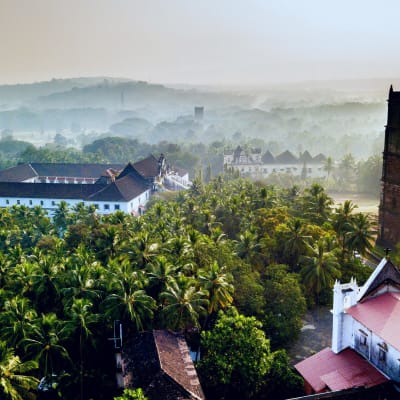Nestled on the western coast of India, the charming state of Goa is renowned for its stunning beaches, vibrant nightlife, and rich cultural heritage. While many visitors flock to the coastal areas, a hidden gem lies inland – Old Goa, a place where time seems to stand still. In this article, we will take you on a journey through the historic and culturally significant places to visit in Old Goa, a UNESCO World Heritage Site.
Basilica of Bom Jesus:-
Our journey through Old Goa begins with a visit to the iconic Basilica of Bom Jesus. This UNESCO World Heritage Site is not just a church; it's a pilgrimage destination and an architectural marvel. The baroque architecture of the church is awe-inspiring, with its intricate gilded altars and stunning frescoes. The highlight, of course, is the silver casket containing the saint's body. A visit here offers not only a spiritual experience but also a glimpse into the artistry and craftsmanship of the Portuguese era.
St. Augustine Tower:-
The ruins of St. Augustine Tower are a testament to the architectural grandeur of Old Goa during the Portuguese colonial period. Built-in the 17th century, this four-story tower was once part of the St. Augustine Church complex. While the church has deteriorated over time, the tower still stands tall, providing panoramic views of the surrounding countryside.
Archaeological Museum:-
A visit to the Archaeological Museum is essential for a deeper understanding of Old Goa's history. Housed in the convent of St. Augustine, the museum showcases an array of artifacts, sculptures, and artwork that reflect the cultural fusion between European and Indian influences during the colonial period.
Church of St. Cajetan:-
The Church of St. Cajetan is often likened to St. Peter's Basilica in Rome due to its striking architectural similarities. Built in the 17th century by Italian friars, this church is a fine example of Corinthian architecture. Its pristine white façade and elegantly designed interiors make it a serene place for reflection and admiration of its architectural beauty.
Chapel of St. Catherine:-
Nestled amidst the ruins of the St. Augustine complex, the Chapel of St. Catherine is a modest yet historically significant structure. This chapel is one of the few remnants of the original complex and offers a tranquil atmosphere for visitors to contemplate the past while surrounded by the remnants of ancient stone arches and walls.
Fontainhas - The Latin Quarter:-
While exploring Old Goa's rich ecclesiastical history is a must, don't miss the chance to wander through the charming lanes of Fontainhas, Goa's Latin Quarter. This area boasts colorful Portuguese-style houses with red-tiled roofs and narrow winding streets. It's a delightful place to immerse yourself in the local culture, art, and cuisine.





















